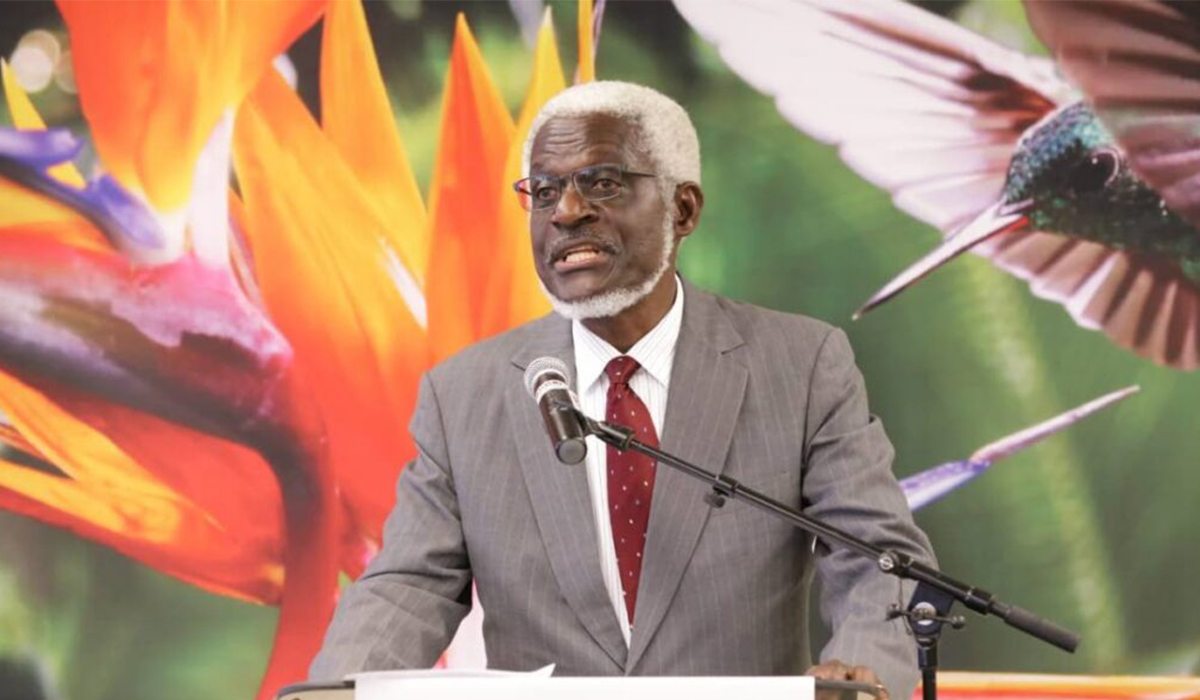
23 Feb Interview with Herbert George, Chairman of NIDCO, Trinidad & Tobago
Can you introduce NIDCO and highlight your recent accomplishments?
Herbert George: I have been Chairman of NIDCO since 2015. NIDCO is a state enterprise responsible for implementing government-assigned infrastructure projects. Our role spans design, tendering and project management to ensure projects are completed on time, within budget and to specification. We operate without government subventions, earning management fees for our services. Over the years, we have honed robust procurement methodologies, handling major acquisitions such as the three vessels for the Trinidad and Tobago Sea-Bridge: Galleons Passage, Buccoo Reef and A.P.T. James. We managed every stage, from specifications and negotiations with shipbuilders to delivery and ongoing maintenance. In addition to project implementation, we assist the government with procurement needs and maintain critical assets like the inter-island ferry vessels, ensuring their readiness for service by the Trinidad and Tobago Inter-Island Transportation (TTIT). In addition to larger vessels, we operate four water taxis that run between San Fernando and Port of Spain, providing much-needed relief from Trinidad’s congested roads and unreliable public transit. Traffic between these cities, especially before the water taxis’ introduction in 2008, was severe. Today, the service transports around 2,000 passengers daily at an affordable fare of $15 one way—a price unchanged since inception and competitive compared to buses ($10) or route taxis ($22). The water taxis primarily operate during peak hours, with an average seat utilization of 56%, leaving room for growth. Plans are being explored to extend the service further south to Point Fortin and west to Chaguaramas, potentially adding stops at Chaguanas. While challenges remain, the water taxis continue to play a critical role in improving transit between San Fernando and Port of Spain.
Does NIDCO focus on large infrastructure projects, like water taxis or the Point Fortin highway extension, rather than smaller tasks like repaving roads? What triggers NIDCO’s involvement in such projects?
Herbert George: NIDCO is not typically involved in road maintenance, which is handled by agencies like the Programme for Upgrading Roads Efficiency (PURE), a department of the Ministry of Works. Instead, we focus on major infrastructure projects such as new roads, bridge replacements, landslip repairs, shoreline protection, marinas and port facilities. We also manage building projects, like the Diego Martin Regional Complex and the SCB National Bank building, overseeing procurement, design and project management to deliver completed facilities to our sole client, the government. Each year, the Ministry of Works determines its portfolio of projects and assigns specific ones to NIDCO for execution.
The new airport in Tobago is expected to be completed sooner than anticipated, possibly in the first part of Q1 next year instead of the end. What are the key targets and expectations? What progress has been made and what benefits do you foresee for Tobago and Trinidad?
Herbert George: The shell of the project is nearly complete, with current efforts focused on outfitting the facility to ensure it is fully operational for the Airport Authority. By the first quarter of next year—January to March—we expect the shell to be finished and outfitting well underway. The facility will be modern and equipped for immediate use. The contractor will install and commission all systems, hand the project over to a consultant for review and approval, and then train Airport Authority personnel. This process, including final training and oversight, should conclude within two months after the first quarter. The government is committed to enhancing Tobago’s tourism by developing a modern international airport. The previous facility was limited and lacked scalability, so this new airport aims to elevate Tobago’s profile as a premier destination. Designed to handle up to 2.8 million passengers annually by 2040, the airport will provide a superior experience for both airlines and passengers, meeting all international standards. It will also enable direct international flights, including a new route from Miami launching next year. Efforts are underway to attract more airlines, boosting visitor numbers and supporting Tobago’s tourism growth. As part of Tobago’s tourism development, we are designing a marina to accommodate yachts, addressing a significant gap in facilities for divers and yacht owners visiting the island. After extensive studies, the government approved the marina’s design. The project requires careful environmental consideration due to its large footprint. We are currently working on the Environmental Impact Assessment (EIA) and seeking a Certificate of Environmental Clearance (CEC) from the Environmental Management Authority. This process takes at least a year, as it involves dry and rainy season data collection. Once the CEC is secured, we will move forward with detailed designs and determine the funding model—whether through public-private partnership (PPP) or other mechanisms—based on government guidance. We are also developing a port at Toco, with the EIA currently underway. This port will significantly reduce travel time between Trinidad and Tobago, cutting the ferry journey from 3.5 hours to much less. Toco’s strategic location will serve as a key tourism gateway and boost economic activity in the underdeveloped northeastern region. Alongside this, the Valencia-to-Toco highway upgrade will improve connectivity, supporting the government’s vision for regional development.
NIDCO issued an RFP for a new cargo ferry to operate the inter-island route, with bids due in May. Can you provide an update on the bids received, the evaluation process and any progress since then?
Herbert George: The evaluation process is detailed, even after selecting a preferred bidder. We then collaborate on finalizing the contract, guided by BIMCO standards—an international authority akin to FIDIC for construction projects. The BIMCO contract is customized with input from both parties. Once finalized, we submit a report to the government, which reviews it and seeks the Cabinet approval. Afterward, we receive instructions to proceed with the contract. Currently, we are finalizing the BIMCO contract, which will soon be submitted to the Cabinet for review. We are addressing three key projects simultaneously: a cargo ferry, a new dry dock facility and the leasing of a submersible dry dock. The original dry dock at Chaguaramas failed but has since been salvaged. A replacement dry dock is in the works, pending government approval, and will be installed in the same location. Building a conventional dry dock would take 18–24 months, so a submersible option is being considered as a quicker solution to meet the demands of certification bodies like Lloyd’s or DNV. This year, we had to send vessels like Galleons Passage to Curaçao for dry docking, which is costly. With national vessels like Buccoo Reef, A.P.T. James and others requiring regular dry docking, having a local facility or submersible would be more efficient. These three initiatives aim to address current and future needs.
What opportunities exist for international companies, particularly from Florida, to submit proposals to NIDCO and establish operations here?
Herbert George: We use an open tender approach, inviting qualified experts to participate. We advertise locally in newspapers, send notices to embassies and high commissions, and publish in relevant journals. For maritime projects, we target regions like Europe and the U.S., working with brokers to reach the right parties. U.S. companies, for example, can access our tenders through the American embassy’s website. When sourcing specific items, like aggregates from Newfoundland, we ensure to target the right markets and use appropriate channels to reach them.
What is your final message to the readers of the Miami Herald and South Florida?
Herbert George: NIDCO is committed to maintaining professionalism and fairness in managing government projects. We follow transparent procurement rules under the OPR, with strict adherence to whistleblower laws. Both local and foreign companies are welcome, and we encourage partnerships between them. For example, the recent Diego Martin Interchange Project, jointly built by China Railway and Junior Sammy, was a success. We ensure fair treatment for all tenders and use established, reliable contracts to guarantee a level playing field for everyone.


Sorry, the comment form is closed at this time.